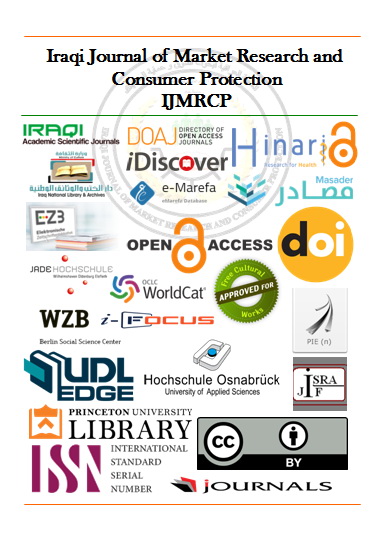EFFICIENCY OF PREDATION Exochomus nigromaculatus (COLEOPTERA: COCCINELLIDAE) ON DIFFERENT DENSITIES OF CITRUS MEALYBUG NYMPHAS Nipaecoccus viridis (HEMIPTERA: PSEUDOCOCCIDAE)
EFFICIENCY OF PREDATION Exochomus nigromaculatus (COLEOPTERA: COCCINELLIDAE) ON DIFFERENT DENSITIES OF CITRUS MEALYBUG NYMPHAS Nipaecoccus viridis (HEMIPTERA: PSEUDOCOCCIDAE)
Keywords:
Predatory efficiency, Mealybug, Nutrition, Biological control, NymphsAbstract
This study was conducted at the biological control laboratories of the Department of Plant Protection /College of Agricultural Engineering Sciences/ University of Baghdad to evaluate the effect of three numerical densities, 25, 50, and 100 of the first instar nymphs of the mealybug Nipaecoccus viridis, on the predatory efficiency and development and growth rates of Exochomus nigromaculatus. The results of the study showed that there was an inverse relationship between the increase of numerical densities of the prey provided and the development and growth rates of the predator. Also, in this result it was recorded that the shortest growth time of the larval stage was at 10.9 days, as well as a daily consumption range was between 24-45 nymphs/day. in addition, the four larval stage recorded the shortest growth period and was at a rate of 2, 1.8, 3.1, and 4 days respectively for each instar at a density of 100 mealybug nymphs. The longest growth time was during the larval stage which was 17.78 days, with a daily consumption range between 4-19 nymphs/day in treatment of density of 25 mealybug nymph, at this density, the longest developmental rates of the four larval stages also were recorded, which were 3.38, 2.9, 5.13, and 6.37 days respectively for each stage, a direct relationship was found between the increase the numerical densities of the preys provided and the consumption rates of the predator, the consumption rate were 217.09 and 391.41 nymphs At densities of 25 and 100 nymphs, respectively, in addition to this , Lowest dead rate was recorded at the larval stage of predator, and reached to 0.00% at densities of 100, while the value was highest at the density of 25 nymph which was 30% . Adult female predators recorded an increase in predation efficiency at a higher rate compared with males at the three mealybug nymph densities, as the daily predation range reached (15-21), (18-38), and (51-63) at densities of 25, 50, and 100, respectively, this was higher than the daily rates of predation recorded by predatory males. Adult females of predator consumed the highest number of nymphs during Within a period of ten days a higher rate than males at the same densities of prey.
Published
Issue
Section
License
Copyright (c) 2025 Iraqi Journal of Market Research and Consumer Protection

This work is licensed under a Creative Commons Attribution 4.0 International License.





